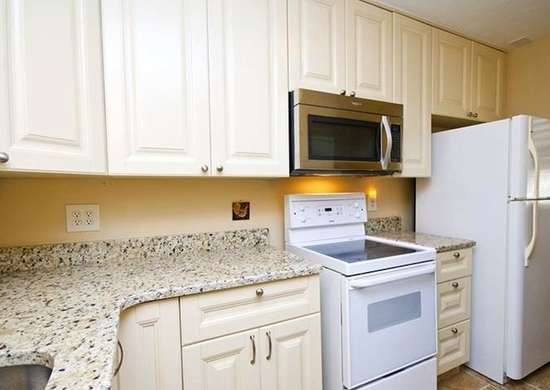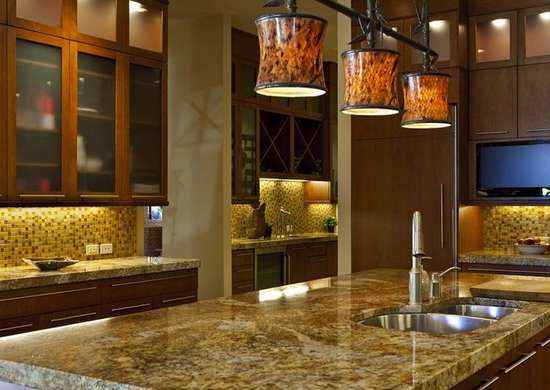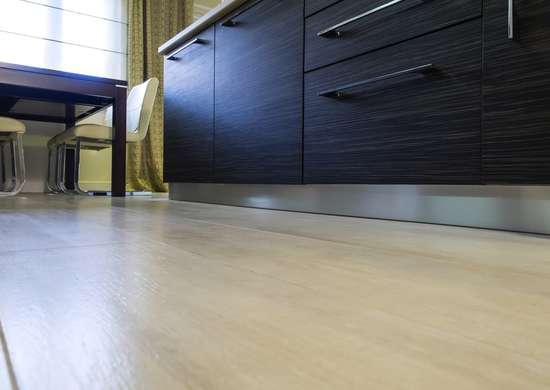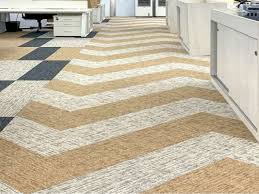How to Reverse a Ceiling Fan
Some ceiling fans receive the Energy Star rating for overall operational and performance efficiency, saving households money every year. This savings depends on your proper use and adjustment of the ceiling fan. If you live in a cool environment, your home could benefit by reversing the direction of the ceiling fan’s rotation. Warmer air in your home naturally stays near the ceiling. Forcing this warm air closer to the ground where people need it the most can help to ease reliance on running other home heating appliances.
- Look at the current rotational direction of the blades. Fan blades should turn clockwise in the winter, pushing warmer air at the ceiling outward and downward into the room. In summer, blades should turn counter-clockwise, steadily pushing air downward, creating a cool-breeze effect. Determine if you really need to change the blades’ direction based on your indoor and outdoor climate.
- Turn off the ceiling fan. Many homes have an On/Off ceiling fan switch on the wall that is combined with the light switch. Many ceiling fans have cords or chains that hang from the center of the casing or housing assembly, and each pull of the cord changes speed or turns the fan on or off. Some modern ceiling fans have On/Off buttons on a wireless remote control.
- Wait for the ceiling fan blades to completely stop rotating, with no intervention from you. Although the blades aren’t turning with any kind of force, you could risk damage to your fingers or the blades.
- Find the switch that reverses the direction of the blades’ rotation. Conventional ceiling fans have a switch on the housing assembly near the pull string or cord. Some modern ceiling fans have remote controls that include a button for reversing blade rotation.
- Push or flip the switch to the opposite position, reversing the direction. Turn the ceiling fan back on and proceed with using it in your home to circulate air. However, note that the agencies that offer Energy Star ratings recommend that you keep the fan speed on low when reversing the blades for winter weather.
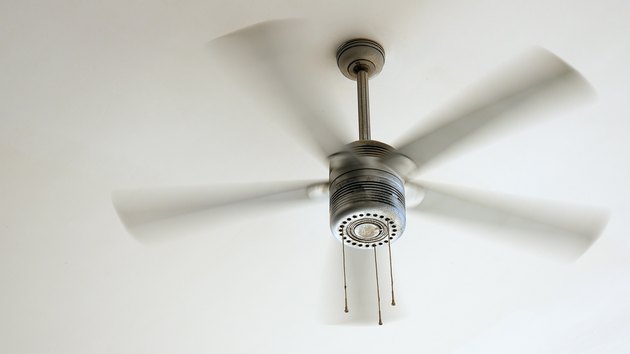
How Changing the Direction of a Ceiling Fan Saves Energy
You may have heard that reversing a ceiling fan can help keep you warmer during the winter (and also cooler during the summer) while saving energy and reducing your utility costs. It’s a simple fix that sounds almost too good to be true, so is there any truth to these claims? Let’s find out.
Why does the direction of my ceiling fan matter?
According to Apartment Therapy, running your ceiling fans during the cold winter months can help you save as much as 10% on your heating costs. How is this possible?
The blades of a ceiling fan are angled slightly. During the summer, when your fan is spinning counterclockwise, those angled blades help move air down. You know it’s working because you can feel a cool breeze when standing directly underneath the fan. This is called the wind chill effect and it makes you feel cooler.
Things change a bit during winter once your heating system kicks on.
Warm air always rises (which is why attics and upper levels of homes are so much warmer than lower levels), so the warm air generated by your furnace naturally rises up to the ceiling while cooler air sinks toward the floor. When you switch the direction that your ceiling fan’s blades turn (so that they’re spinning clockwise), that cold air is drawn upward. This updraft forces the warmer air back down toward you and your family.
Why does changing the direction of a ceiling fan save money and energy?
Your thermostat is located closer to the ground so that you can easily monitor it and adjust the setting. Since the thermostat detects the temperature of the air near it, keeping warm air closer to your thermostat allows you to set it at a lower temperature while still staying nice and toasty.
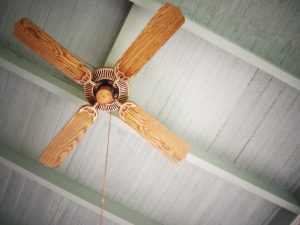
Setting Your Ceiling Fan to the Proper Rotation
Many newer ceiling fans come with a remote control. You can use this to change the fan’s rotation at the push of a button. If you don’t have a remote, you’ll have to get a ladder so you’re at eye level with the fan. Look for the toggle switch on the “stem” of the ceiling fan. It’s usually located below the blade. Toggle the switch to the desired rotation.
If you’re not sure if you’re using the right setting, note the direction the fan is turning. If the fan is moving in the same direction as the hands of the clock, it’s in the winter setting. If the blades are turning in the opposite direction, it’s on the summer setting.
Your ceiling fan doesn’t have to remain dormant while the heat or air conditioner is on. Use your fan to work with the hot and cold air, and watch your energy bill go down.

How Do I Know What Direction To Set My Ceiling Fan?
Ceiling Fan Direction & Reversing
In Summer: Counter-Clockwise
Running a ceiling fan in the proper direction all year round can help save energy and keep you more comfortable. In the summertime, run your ceiling fan counter-clockwise to push cool air down. To make sure it is set correctly, stand directly under the fan blades and watch the blades rotate. The blades should move from the top left, then down to the right, and then back to the top.
In Winter: Clockwise
During the winter, a clockwise rotation will move the cooler air off the floor and push the warm air down the walls without the strong draft. The blades should move like a clock’s hand – from the top to the right, then down to the left, and back to the top – at a low speed to pull cool air up.
Reversing Direction on a Pull Chain Fan
Check your ceiling fan’s housing and light fixture for the reversing switch. You will likely have a reversing switch if you have a Hunter ceiling fan with pull chains. With a reversing switch, slide it to the opposite direction, and then you can restart the fan.
Reversing Direction on a Ceiling Fan with a Remote
Many of our ceiling fans with remotes come with a push button reverse option. If you don’t see a reverse switch on your fan’s body, you’ll be able to reverse the ceiling fan direction with the handheld remote or wall control. Simply press and hold the fan button on the remote or wall control; you’ll know it was successful when the light on the control blinks.
Ceiling Fans And Air Movement
As stated above, ceiling fans don’t cool the air around them. Rather, they move air around. Essentially, they create a cool breeze—even cooler when you have the air conditioner running as well (plus, ceiling fans help with AC efficiency, which we’ll get to below).
But running your ceiling fan all day–specifically, when nobody is home–could be more wasteful than it is helpful. Since it doesn’t actually cool the air, you’re running an electric device for essentially no reason. While ceiling fans don’t eat up a significant amount of energy (which is why so many people take advantage them for their homes), they do still contribute to the cost of your electricity.
Additionally, running the motor of your ceiling fan can actually add heat to the room. So, imagine you aren’t home all day, and you have no AC system running, but your ceiling fan is on the whole time. Sure, you may feel a cool breeze when you walk into the room, but overall you may have contributed to an increase in the room’s temperature.




